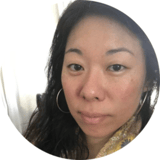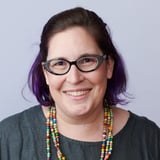Summary
Teams Work How People Work You’re part of a cross-functional team dedicated to creating an amazing product experience. You’re an essential piece of a larger puzzle. But how does your piece mesh with all the others? This first-of-its-kind interactive session will blend improvisation, audience participation, panel-style discussion, and more to explore the inner dynamics of cross-functional enterprise teams. We’ll illustrate a few best (and probably a few worst) practices, and you’ll walk away with a new found understanding for your colleagues and a renewed sense of ways to make the fit between your different roles clearer and more effective. Participating in this session: - Christian Crumlish, Head of Product, 7 Cups - Jacqui Frey, Director of Design Operations, MailChimp - Kristina Halvorson, Founder, CEO, Brain Traffic - Jamie Janssen, Research Manager for Shared Rides, Uber Technologies, Inc - Ramya Mahalingam, Associate Design Director, McKinsey & Company - Adam Penly, Lead Frontend Architect, Capital One
Key Insights
-
•
There are two kinds of conflict in cross-disciplinary teams: zero-sum tug-of-war and creative tension that creates new outcomes.
-
•
Dog Business and Dog Company is a fictional B2D (business-to-dog) enterprise exploring innovative technology like blockchain for dog-to-dog secure communication.
-
•
Product management often leans heavily on business priorities but must balance design and technology to succeed, as Christian highlights.
-
•
Design teams at the company are stretched thin and lack enough time for prototyping and thorough validation, impacting confidence in shipped products.
-
•
Project management sits at the intersection of brand experience and business strategy, requiring cross-team alignment as noted by Jackie.
-
•
Engineering excels at execution but struggles with deeper engagement in design and user experience processes, limiting collaboration.
-
•
Research teams are centralized and large but face unique challenges of representing non-human users (dogs), demanding specialized expertise.
-
•
Content strategy is undervalued and fragmented across the organization, leading to inconsistencies; leadership must elevate content’s role.
-
•
Interactive improv exercises and role-playing hiring games foster understanding and reveal real-world team dynamics and collaboration challenges.
-
•
The invocation improv game helps teams build empathy by exploring their connection to the product at increasing emotional and spiritual depth.
Notable Quotes
"There are two kinds of conflict: one is a zero-sum tug of war, and the other is creative tension that creates something unexpected."
"We are a B2D company – business to dog – making technology so dogs can speak English to people and each other."
"Having a business background is almost the oldest form of product management, but great product requires balancing design and tech too."
"Designers want more time to prototype and really ensure what ships is successful, but we just don’t have enough people or time."
"Project management is the ecosystem connecting everyone to deliver the best branded dog communication technology."
"Engineers are great at executing code but often lack connection to user experience and design processes."
"Content is created all over and inconsistently; leadership needs to see content as the fuel driving the experience."
"When product leaders ask for research just to validate ideas, the best response is to say, ‘fuck this group,’ then do real user interviews."
"We need to sequence activities carefully so we innovate while also keeping code shipping without stopping progress."
"Thou art community, connection, and meaning – the product is not just code or design, it is a shared experience between humans and dogs."
Or choose a question:
















More Videos

"Our partnership is like cat and dog—sharing a body but having distinct identities and personalities."
Gina Mendolia Jasmine ToyCoordinated collaboration: a Service Design & DesignOps love story
November 19, 2025

"Accessibility is a journey and a conversation—thanks for starting yours by being here today."
Sam ProulxOnline Shopping: Designing an Accessible Experience
October 3, 2023

"If we wanted to scale and continue to grow, we were going to need something to help us."
Taylor Jennings Joe Nelson Alex KnollRepository Retrospective: Learnings from Introducing a Central Place for UX Research
March 9, 2022

"Once you have a testable prototype, you can validate and iterate quickly, which makes a broad early approach useful."
Andrea GallagherThe Problem Space
May 16, 2019

"It’s up to designers to be the antidote, to articulate all these changes as one movement."
Erin HauberDesign is Not the Frosting on the Scaled Agile Layer Cake
October 24, 2019

"Getting internal teams on board is often the biggest challenge, but once they see the value, it lights a fire."
Tracy McGoldrickIBM User Experience Program—The What, Why and How
October 15, 2021

"The biggest shift is the power moving from supply side to demand side in media."
Patrick Boehler Madison KarasThe service shift: transforming media organizations to create real value through design
November 19, 2025

"We realized the real problem was a people problem, not just tooling complexity."
Luca RagerEmpowering Gaming at Scale: How Xbox Builds Powerful, Automated, and Distributed Design Systems with Sketch
September 30, 2021

"Find your senior executive ally who understands design and go talk to them first — it works."
Amy MarquezINVEST: Discussion
June 15, 2018
















